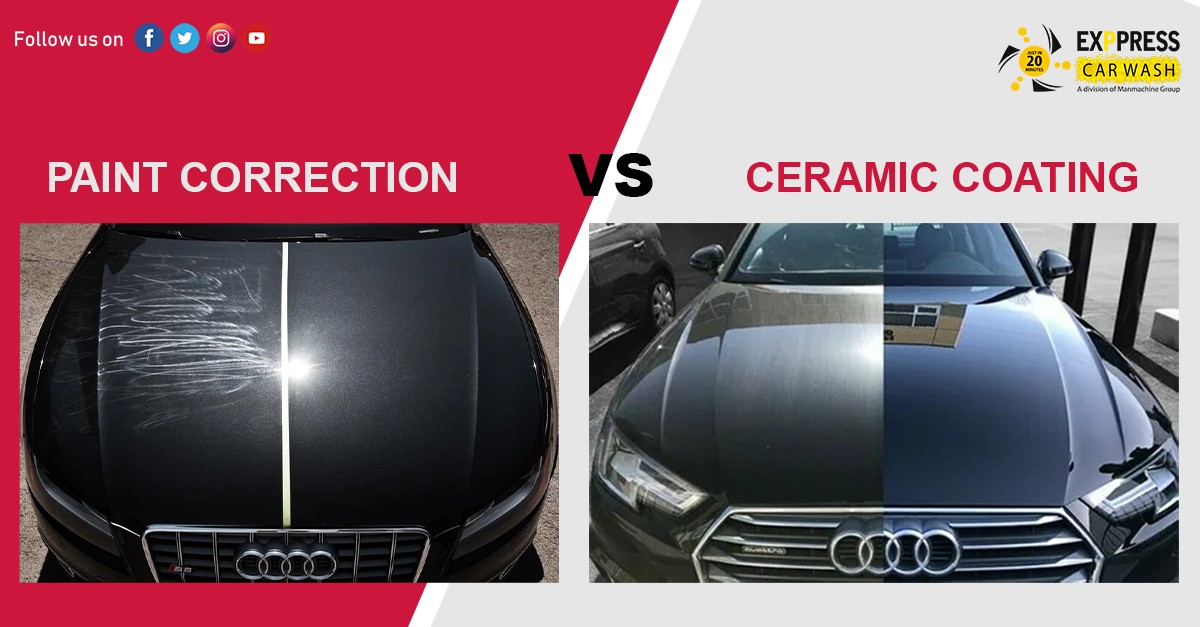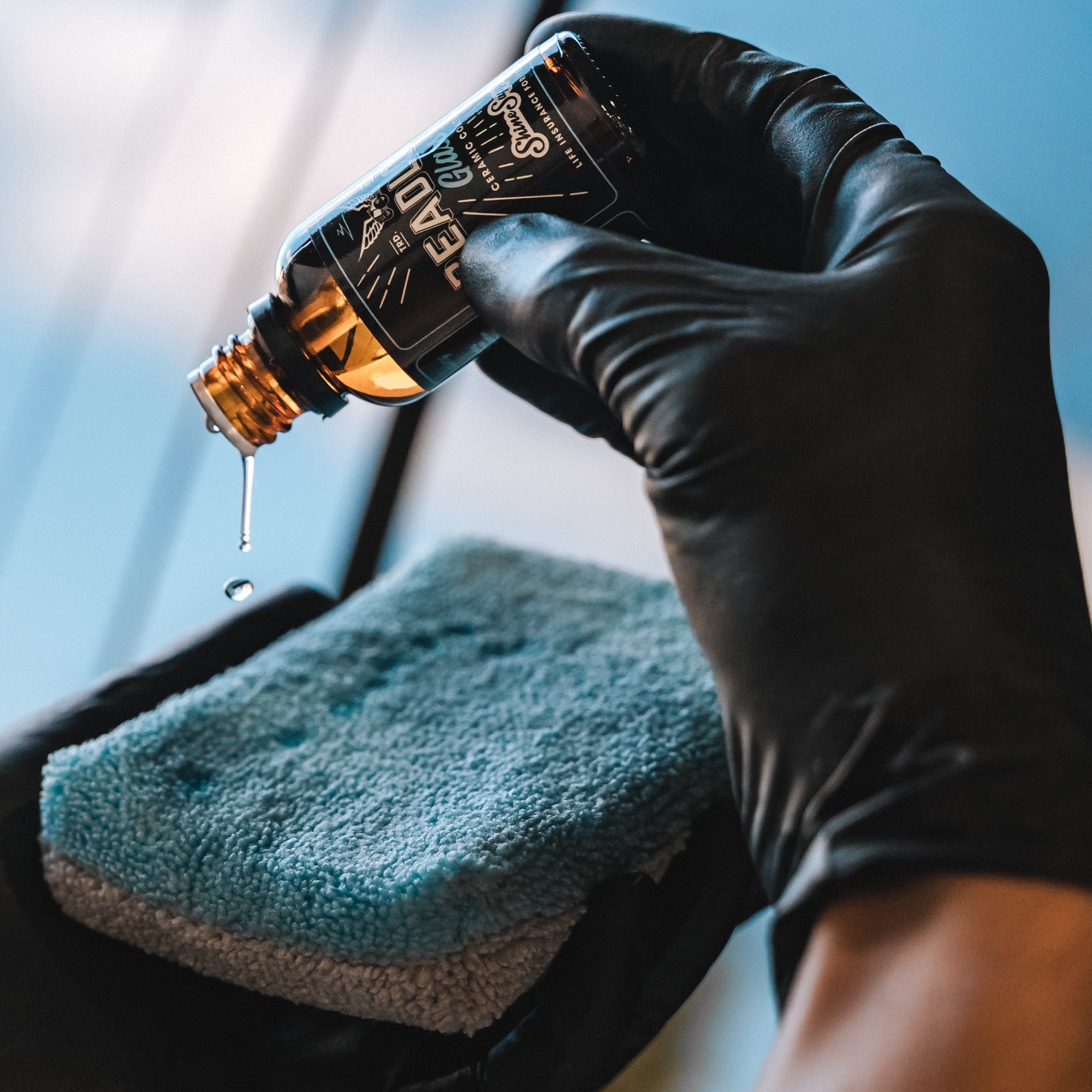Discovering the Science Behind Ceramic Finishing and Its Effect On Automobile Describing
The application of ceramic covering in auto describing stands for a substantial innovation in automotive care, rooted in its sophisticated chemical buildings, mainly silica dioxide and titanium dioxide. As we check out the complexities of the application procedure and the lasting implications for car maintenance, it ends up being clear that the choice of ceramic finish can fundamentally alter one's method to vehicle care.
What Is Ceramic Coating?
Ceramic finish is a contemporary service that has actually gained appeal in the automobile describing industry for its ability to offer lasting protection for automobile surface areas. This advanced safety layer is normally composed of silica dioxide (SiO2), which creates a strong bond with the automobile's paint, creating a durable shield versus environmental contaminants. Unlike standard wax or sealants, ceramic coverings offer premium resistance to UV rays, chemical spots, and physical abrasions.
The application of ceramic layer involves a meticulous process, where the automobile's surface area is completely cleaned up and decontaminated before the finish is applied (Ceramic Coating). Once treated, the finishing boosts the automobile's gloss, deepness, and clarity, providing a showroom-quality finish that lasts for years. One of the vital advantages of ceramic covering is its hydrophobic residential properties, which repel water and dirt, making maintenance easier and decreasing the frequency of washes
The Chemistry of Ceramic Finishing
An essential facet of ceramic covering depends on its chemical structure, mainly identified by the presence of silica dioxide (SiO2) This substance is essential to the formation of a long lasting, protective layer that bonds chemically to the vehicle's surface area. When applied, the SiO2 particles go through a process understood as polymerization, wherein they develop a network of interconnected structures. This leads to a durable, hydrophobic surface area that pushes back water and impurities.
In addition to SiO2, many ceramic coatings incorporate titanium dioxide (TiO2) and other additives to enhance their efficiency attributes. TiO2, for instance, adds to enhanced solidity and chemical resistance. The communication in between these compounds produces an one-of-a-kind molecular structure that provides a high degree of defense against ecological variables such as UV rays, acid rainfall, and oxidation.
Additionally, the application procedure frequently entails a meticulous preparation of the surface to ensure optimum attachment of the coating. This chemistry not only ensures a long-lasting finish yet likewise boosts the aesthetic allure of the car. Recognizing the elaborate chemistry behind ceramic coverings is vital for detailing specialists that intend to offer premium protection and long life for their customers' vehicles.
Advantages of Ceramic Covering
While outlining experts frequently highlight the benefits of ceramic finishes, their benefits extend much past looks. Ceramic layers develop a hydrophobic surface area that repels water, dirt, and grime, dramatically minimizing the frequency of cleans and the effort called for to preserve a vehicle's appearance.
In addition, ceramic coatings improve the durability of the car's surface. Unlike traditional waxes or sealants, which might last a couple of months, ceramic coatings can sustain for years, supplying a lasting option for car care. This durability equates to cost savings, as owners are less likely to require regular reapplication.
In addition, ceramic layers are immune to chemical stains and etching, which can take place from acidic materials like bird droppings or tree sap. This resistance not just preserves the vehicle's visual appeals but likewise reduces prospective damage - Ceramic Coating. In general, the investment in ceramic coating supplies car owners a significant return in terms of defense, simplicity of upkeep, and resilient aesthetic allure, making it a significantly prominent choice in the world of automobile describing
Application Process Described

As soon as the surface is appropriately prepared, the ceramic layer can be used. Utilizing an applicator pad, the service technician applies the covering in small sections, functioning in a crosshatch pattern to make certain also insurance coverage.
After applying the layer, the vehicle should be allowed to cure, which may take numerous hours to numerous days, depending upon the particular item made use of. During this duration, it is crucial to keep the lorry far from wetness and contaminants. As soon as healed, the ceramic finishing develops a solid bond with the paint, providing improved protection and a glossy finish. Proper application is vital to optimize the durability and performance of the ceramic finish.

Long-lasting Effect On Automobile Care
The long-lasting effect of ceramic finishing on vehicle treatment is considerable, as it fundamentally changes just how proprietors preserve their automobiles. By creating a resilient, hydrophobic layer on the vehicle's surface area, ceramic finishings reduce more info here the adherence of dirt, gunk, and pollutants. This residential or commercial property reduces the frequency of washing called for, eventually conserving water and cleansing items.
Additionally, the UV defense provided by ceramic finishings aids to avoid oxidation and fading of the lorry's paint, protecting its aesthetic allure and resale worth gradually - Ceramic Coating. This protective obstacle likewise decreases the probability of scrapes and swirl marks, which prevail issues in traditional paint surfaces
Moreover, ceramic finishings promote easier maintenance, enabling owners to cleanse their cars with marginal initiative. The smooth surface makes it challenging for contaminants to bond, making it possible for easier removal throughout regular cleaning.
In the future, the investment in ceramic coating might cause cost financial savings in lorry care product or services. On the whole, the enduring advantages of ceramic finishings not just improve the appearance of cars yet additionally contribute to a more lasting and efficient strategy to automobile upkeep.
Final Thought
In conclusion, the application of ceramic coating stands for a significant innovation in cars and truck detailing, driven by its special chemical make-up of silica dioxide and titanium dioxide. This technology not only improves the visual charm of lorries however likewise offers durable protection versus ecological threats and put on. The long-lasting Resources advantages, consisting of decreased maintenance regularity and boosted durability, highlight the worth of ceramic finishings as an essential financial investment for preserving automobile appearance and honesty gradually.
